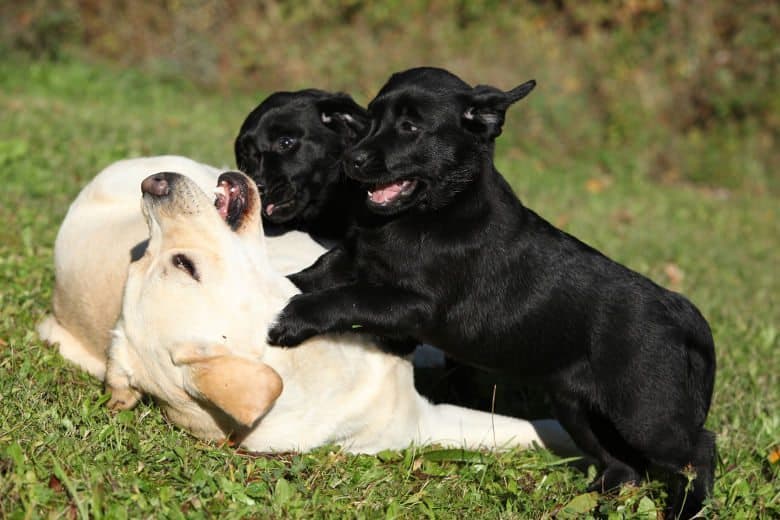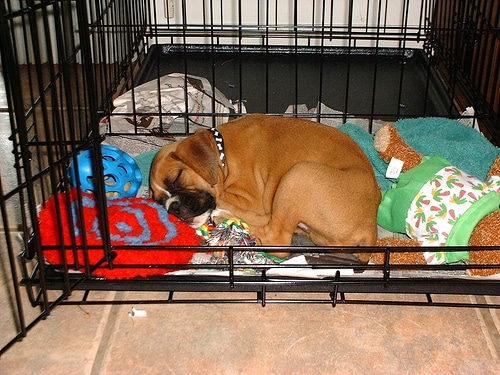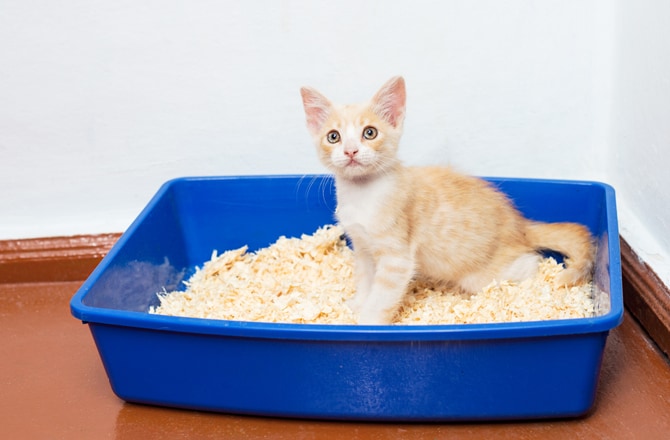
Here's your basic sandbox: about five inches deep, about 15 x 18", plastic and rectangular. These are available anywhere pet items are sold. Cheap and easy to clean. Cats usually like them, but owners quickly discover that there is a problem: litter goes over the sides easily and has to be cleaned up, and sometimes cats will stand in the box and poop/pee over the edge, not realizing that their aim is off. So then this happens:

Back to the store to buy the snap-on wall extender. No more peeing over the edge! Now urine just hits the side and seeps into the space between the box and snap-on rim, where it leaks, dribbles, dries, and stinks. The front is cut low "for easy entry", so there's still some litter getting kicked out. So then this happens:
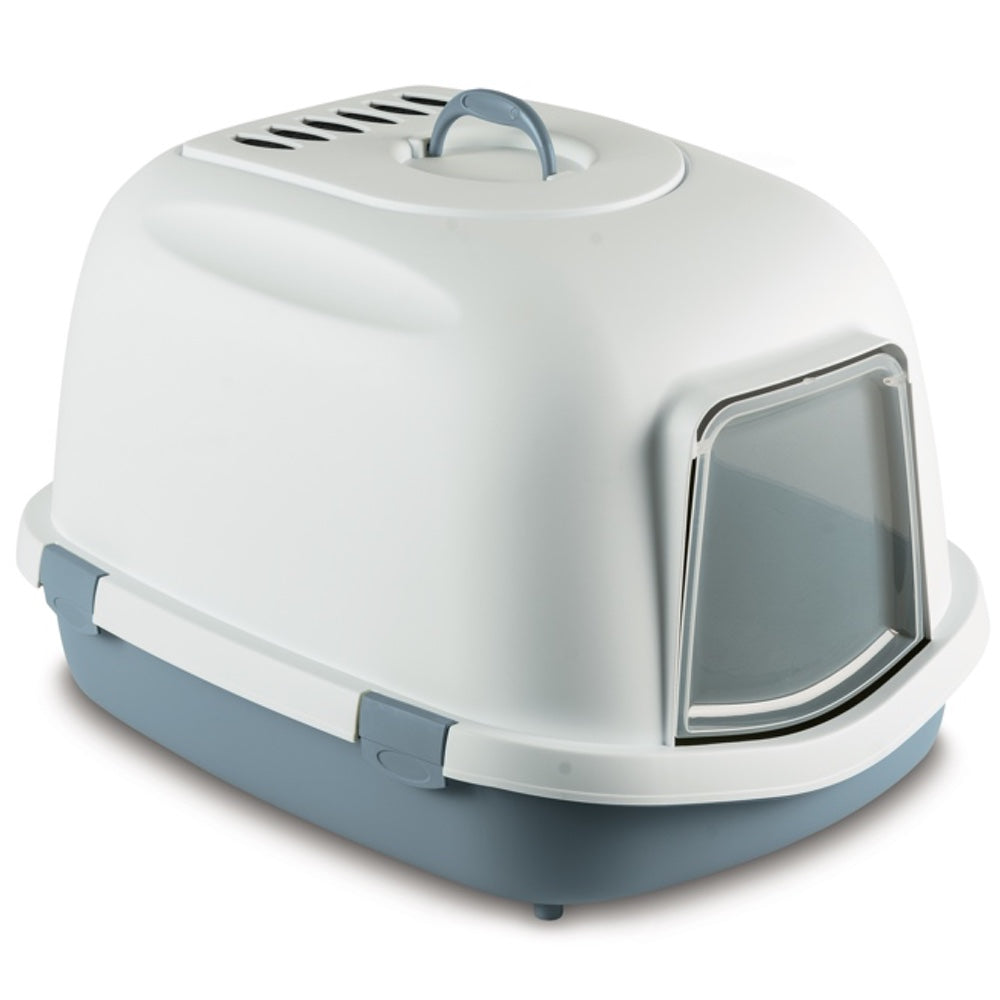
Okay! Now there's a vent at the top to filter stinky air, and the whole box is enclosed to keep the litter in. So this must be the perfect litter box, right? Except that you have to take off that whole lid in order to scoop, and I can tell you from experience that at least three of those four clips will break in the first few months. And there's still that snap-on space between bottom and top where urine can accumulate, and that vent on top is where the stinky cat box smell comes out. Oh, you can put in a filter to help? There's not enough air flow to make a filter function properly, so it's quite useless except for holding odor in. This box has a door flap, so it actually might also keep odor in fairly well -- a reason your cat might refuse to use it. Take the door off? Sure. Now there's more litter on the floor.
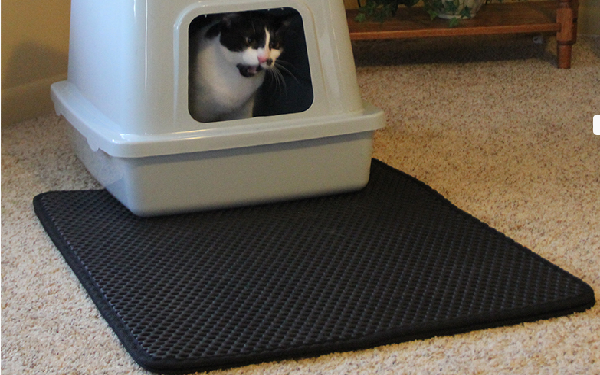
A mat! Now you're thinking. You can vacuum it when you vacuum the floor. So... just an extra thing to vacuum, then, isn't it?
Then there are all the more gadget-y options that spin, sift, and make all sort of clean, fresh promises for you and your cat:
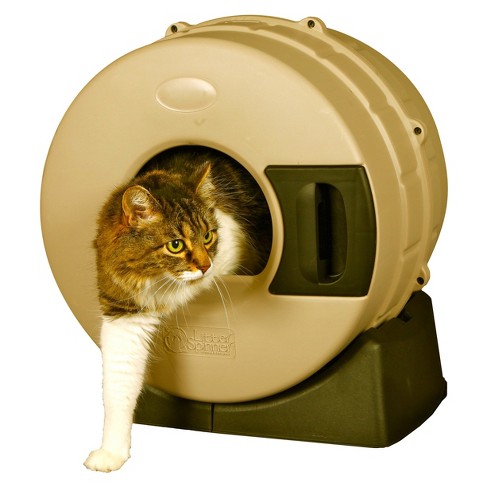
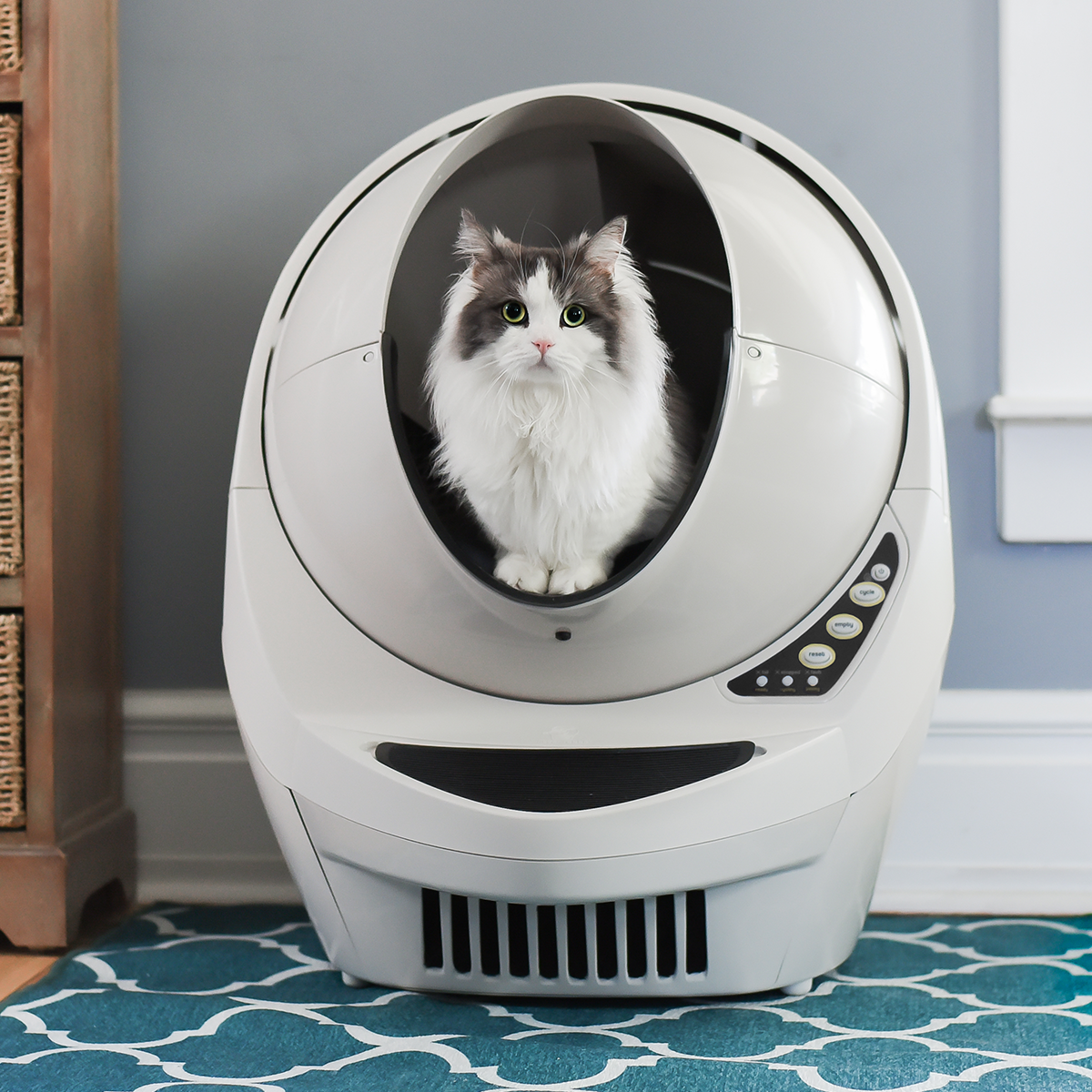

That last cat looks as if she were ready to go for a ride if someone would just fire up her hovercraft.
Okay, Karen, I hear you saying, so what's YOUR solution? What is the perfect litter box?

It's a 14-gallon storage tote! Generously sized, it has walls as tall as your cat. The heavy duty plastic won't crack or break and is easy to clean, with no extra pieces or parts where icky stuff can accumulate. I've used these for years and never found anything I liked as well for simple hard-wearing dependability. I don't use the lid at all, though if you have a curious dog, cutting a hole in the lid will give the cat access and keep the dog out. Don't make the rookie mistake of cutting the side down or putting a hole in the side to let the cat in -- your cat can jump onto the bed or kitchen counter; he can certainly jump into the litterbox.
I like that it holds a lot of litter -- six inch deep litter is usually enough to let the litter clump without sticking to the bottom, which makes clean up easier. Scoop often, and every once in a while I dump out all the litter and give the tote a good wash.
Keep it fresh! Clean litter box = happy, healthier cat!
